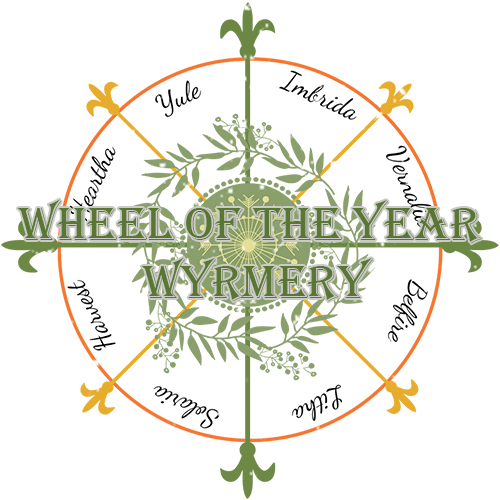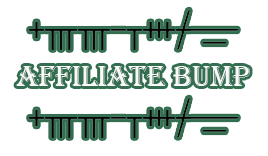[center][img]https://images2.imgbox.com/77/f4/mnXW0R6m_o.gif[/img]
[/center]
[center][b][i] In the humid green depths of the forest surrounding the tiny pocket of paradise, the island known as Tir na nOg. The thick, sweet smell of ripening apples wafts over the waters, the breeze carrying it whistling into an archway. It was set into a Barrowmound, with a triquetra graven into the mossy stone of the lintel. Outside the archway was a circle of flat ground, a grassy meadow, with a great firepit in the middle ringed by stones.
It is another place of power, Temair, the seat of kings and the earthly home of The Tuatha De Dannan. There is a shimmering of air within, as if the veil here between worlds were thin on a good day. As the seasons pass dragons from Tir na nOg board a great ferry and set up celebrations before the archway, and from it, they anticipate the arrival of that holidays Lord and Lady. What festivities are going on, or, planned? Read on.[/i][/b][/center]
[center] [img]https://i.imgur.com/TpL7VL1.png[/img][/center]
Welcome to Wheel of The Year Wyrmery, where you can get your very own Celtic/Gaelic/Druidic themed dragon, based on the legends and Gods associated with each holiday, each point on the Eightfold Wheel of The Year. I breed them in and out of flight[Nature] depending on requests and whim. Below I have listed the pairs in order from Samhuinn to Mabon, how I see the wheel turning.
Hatchlings will wait for a week before I list them on AH. There are several options when buying. I take Treasure, Gems, green/nature themed items, art, leveling, and foodpoints as payment.
I offer lore with a bio template and without.
Lore: +5kt
Lore and Bio Template: +10kt
Discounts! All of these stack!
Dom Flight gets 10% off
Flight Holiday 10% off
Affiliates get 10% off
In the humid green depths of the forest surrounding the tiny pocket of paradise, the island known as Tir na nOg. The thick, sweet smell of ripening apples wafts over the waters, the breeze carrying it whistling into an archway. It was set into a Barrowmound, with a triquetra graven into the mossy stone of the lintel. Outside the archway was a circle of flat ground, a grassy meadow, with a great firepit in the middle ringed by stones.
It is another place of power, Temair, the seat of kings and the earthly home of The Tuatha De Dannan. There is a shimmering of air within, as if the veil here between worlds were thin on a good day. As the seasons pass dragons from Tir na nOg board a great ferry and set up celebrations before the archway, and from it, they anticipate the arrival of that holidays Lord and Lady. What festivities are going on, or, planned? Read on.

Welcome to Wheel of The Year Wyrmery, where you can get your very own Celtic/Gaelic/Druidic themed dragon, based on the legends and Gods associated with each holiday, each point on the Eightfold Wheel of The Year. I breed them in and out of flight[Nature] depending on requests and whim. Below I have listed the pairs in order from Samhuinn to Mabon, how I see the wheel turning.
Hatchlings will wait for a week before I list them on AH. There are several options when buying. I take Treasure, Gems, green/nature themed items, art, leveling, and foodpoints as payment.
I offer lore with a bio template and without.
Lore: +5kt
Lore and Bio Template: +10kt
Discounts! All of these stack!
Dom Flight gets 10% off
Flight Holiday 10% off
Affiliates get 10% off

[img]https://i.imgur.com/pNJQLSL.png[/img]
[img]https://images2.imgbox.com/3b/63/80L197uR_o.png[/img]
[quote= Samhuinn]
Looking at the complete cycle, we shall begin at Samhuinn - a time which marked traditionally the ending and the beginning of the Celtic Year.
Samhuinn, from October 31st to November 2nd, was a time of no-time. Celtic society, like all early societies, was highly structured and organised - everyone knew their place. But to allow that order to be psychologically comfortable, the Celts knew that there had to be a time when order and structure were abolished - when chaos could reign. And Samhuinn was such a time. Time was abolished for the three days of this festival, and people did crazy things - men dressed as women and women as men. Farmers' gates were unhinged and left in ditches, peoples' horses were moved to different fields, and children would knock on neighbours' doors for food and treats in a way that we still find today, in a watered-down way, in the custom of trick-or-treating on Hallowe'en.
But behind this apparent lunacy, lay a deeper meaning. The Druids knew that these three days had a special quality about them. The veil between this world and the World of the Ancestors was drawn aside on these nights, and for those who were prepared, journeys could be made in safety to the 'other side'. The Druid rites, therefore, were concerned with making contact with the spirits of the departed, who were seen as sources of guidance and inspiration rather than as sources of dread. The dark moon, the time when no moon can be seen in the sky, was the phase of the moon which ruled this time, because it represents a time in which our mortal sight needs to be obscured in order for us to see into the other worlds.
The dead are honoured and feasted, not as the dead, but as the living spirits of loved ones and of guardians who hold the root-wisdom of the tribe. With the coming of Christianity, this festival was turned into All Hallows [commonly referred to as Hallowe'en on October 31st], All Saints [November 1st] and All Souls [November 2nd]. Here we can see most clearly the way in which Christianity built on the pagan foundations it found rooted in these isles. Not only does the purpose of the festival match with the earlier one, but even the unusual length of the festival is the same.
[/quote]
[img]https://i.imgur.com/TpL7VL1.png[/img]
Babies for sale from this pair listed with temporary Gaelic names and prices:
[url=https://www1.flightrising.com/dragon/73394660][img]https://www1.flightrising.com/rendern/350/733947/73394660_350.png[/img][/url] "Aodh" 30kt
[url=https://www1.flightrising.com/dragon/73394661][img]https://www1.flightrising.com/rendern/350/733947/73394661_350.png[/img][/url] "Barabal" 30kt
[url=https://www1.flightrising.com/dragon/73394662][img]https://www1.flightrising.com/rendern/350/733947/73394662_350.png[/img][/url] "Ciarda" 30kt
[url=https://www1.flightrising.com/dragon/73394663][img]https://www1.flightrising.com/rendern/350/733947/73394663_350.png[/img][/url] "Bradach" 40kt

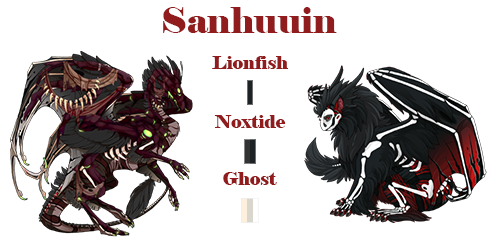
Samhuinn wrote:
Looking at the complete cycle, we shall begin at Samhuinn - a time which marked traditionally the ending and the beginning of the Celtic Year.
Samhuinn, from October 31st to November 2nd, was a time of no-time. Celtic society, like all early societies, was highly structured and organised - everyone knew their place. But to allow that order to be psychologically comfortable, the Celts knew that there had to be a time when order and structure were abolished - when chaos could reign. And Samhuinn was such a time. Time was abolished for the three days of this festival, and people did crazy things - men dressed as women and women as men. Farmers' gates were unhinged and left in ditches, peoples' horses were moved to different fields, and children would knock on neighbours' doors for food and treats in a way that we still find today, in a watered-down way, in the custom of trick-or-treating on Hallowe'en.
But behind this apparent lunacy, lay a deeper meaning. The Druids knew that these three days had a special quality about them. The veil between this world and the World of the Ancestors was drawn aside on these nights, and for those who were prepared, journeys could be made in safety to the 'other side'. The Druid rites, therefore, were concerned with making contact with the spirits of the departed, who were seen as sources of guidance and inspiration rather than as sources of dread. The dark moon, the time when no moon can be seen in the sky, was the phase of the moon which ruled this time, because it represents a time in which our mortal sight needs to be obscured in order for us to see into the other worlds.
The dead are honoured and feasted, not as the dead, but as the living spirits of loved ones and of guardians who hold the root-wisdom of the tribe. With the coming of Christianity, this festival was turned into All Hallows [commonly referred to as Hallowe'en on October 31st], All Saints [November 1st] and All Souls [November 2nd]. Here we can see most clearly the way in which Christianity built on the pagan foundations it found rooted in these isles. Not only does the purpose of the festival match with the earlier one, but even the unusual length of the festival is the same.

Babies for sale from this pair listed with temporary Gaelic names and prices:
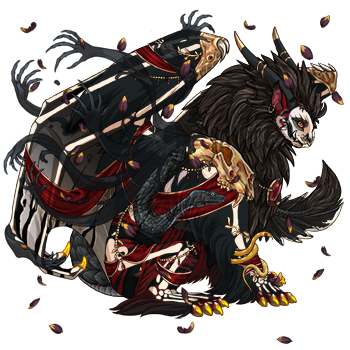
"Aodh" 30kt
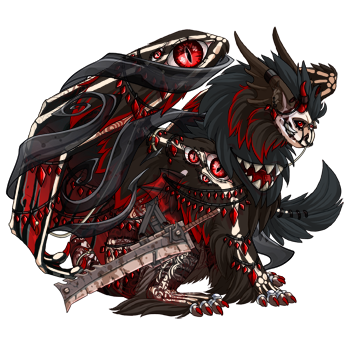
"Barabal" 30kt
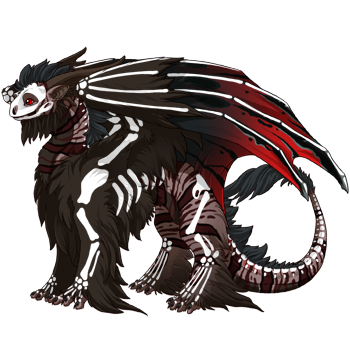
"Ciarda" 30kt
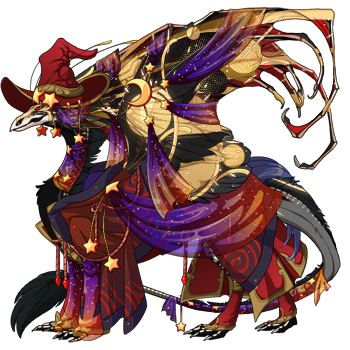
"Bradach" 40kt

[img]https://i.imgur.com/6wX6D4c.png[/img]
[img]https://images2.imgbox.com/3b/63/80L197uR_o.png[/img]
[quote= Samhuinn]
Looking at the complete cycle, we shall begin at Samhuinn - a time which marked traditionally the ending and the beginning of the Celtic Year.
Samhuinn, from October 31st to November 2nd, was a time of no-time. Celtic society, like all early societies, was highly structured and organised - everyone knew their place. But to allow that order to be psychologically comfortable, the Celts knew that there had to be a time when order and structure were abolished - when chaos could reign. And Samhuinn was such a time. Time was abolished for the three days of this festival, and people did crazy things - men dressed as women and women as men. Farmers' gates were unhinged and left in ditches, peoples' horses were moved to different fields, and children would knock on neighbours' doors for food and treats in a way that we still find today, in a watered-down way, in the custom of trick-or-treating on Hallowe'en.
But behind this apparent lunacy, lay a deeper meaning. The Druids knew that these three days had a special quality about them. The veil between this world and the World of the Ancestors was drawn aside on these nights, and for those who were prepared, journeys could be made in safety to the 'other side'. The Druid rites, therefore, were concerned with making contact with the spirits of the departed, who were seen as sources of guidance and inspiration rather than as sources of dread. The dark moon, the time when no moon can be seen in the sky, was the phase of the moon which ruled this time, because it represents a time in which our mortal sight needs to be obscured in order for us to see into the other worlds.
The dead are honoured and feasted, not as the dead, but as the living spirits of loved ones and of guardians who hold the root-wisdom of the tribe. With the coming of Christianity, this festival was turned into All Hallows [commonly referred to as Hallowe'en on October 31st], All Saints [November 1st] and All Souls [November 2nd]. Here we can see most clearly the way in which Christianity built on the pagan foundations it found rooted in these isles. Not only does the purpose of the festival match with the earlier one, but even the unusual length of the festival is the same.
[/quote]
[img]https://i.imgur.com/PMwGxLK.png[/img]
[img]https://images2.imgbox.com/28/2b/rjAnLXsT_o.png[/img]
[quote=The Light of Arthur] [b][/b]
Next in the cycle is the time of the Winter Solstice, called in the Druid Tradition Alban Arthan [the Light of Arthur]. This is the time of death and rebirth. The sun appears to be abandoning us completely as the longest night comes to us. Linking our own inner journey to the yearly cycle, the words of the Druid ceremony ask "Cast away, O wo/man whatever impedes the appearance of light." In darkness we throw on to the ground the scraps of material we have been carrying that signify those things which have been holding us back, and one lamp is lit from a flint and raised up on the Druid's crook in the East. The year is reborn and a new cycle begins, which will reach its peak at the time of the Midsummer Solstice, before returning again to the place of death-and-birth.
Although the Bible indicates that Jesus was born in the Spring, it is no accident that the early Church chose to move his official birthday to the time of the Midwinter Solstice - for it is indeed a time when the Light enters the darkness of the World, and we see again the building of Christianity on the foundations of earlier belief.
In a Christian culture we really only have one marker for the year, and that is Christmas. Easter and Harvest-time used to be significant, but can hardly be considered so now, when only a fraction of the British population attend Church regularly.
Druidry has eight markers, which means that every six weeks or so, we have the opportunity to step out of the humdrum of daily life, to honour the conjunction of Place and Time
[/quote]
[img]https://i.imgur.com/PMwGxLK.png[/img]
[img]https://images2.imgbox.com/fe/12/Nvl97O79_o.png[/img]
[quote=Oimelc, Ewes Milk]
The next Festival occurs on February 2nd, or the eve of February 1st. It is called Imbolc in the Druid tradition, or sometimes Oimelc. Although we would think of Imbolc as being in the midst of Winter, it represents in fact the first of a trio of Spring celebrations, since it is the time of the first appearance of the snowdrop, and of the melting of the snows and the clearing of the debris of Winter. It is a time when we sense the first glimmer of Spring, and when the lambs are born. In the Druid tradition it is a gentle, beautiful festival in which the Mother Goddess is honoured with eight candles rising out of the water at the centre of the ceremonial circle.
The Goddess that ruled Samhuinn was the Cailleach, the Grey Hag, the Mountain Mother, the Dark Woman of Knowledge. But by Imbolc the Goddess has become Brighid, the Goddess of poets, healers and midwives.
And so we often use Imbolc as a time for an Eisteddfod dedicated to poetry and song praising the Goddess in her many forms. The Christian development of this festival is Candlemas - the time of the Presentation of Christ in the Temple. For years successive Popes had tried to stop parades of lit candles in the streets of Rome at this time, until seeing that it was impossible to put a stop to this pagan custom, they suggested that everyone enter the churches so that the priests could bless the candles.
[/quote]
[img]https://i.imgur.com/PMwGxLK.png[/img]
[img]https://images2.imgbox.com/bc/35/vEk2iX0P_o.png[/img]
[quote= The Time of Light and Earth] [b][/b]
Time moves on, and in a short while we come to the Spring Equinox - the time of equality of day and night, when the forces of the light are on the increase. At the centre of the trio of Spring Festas, Alban Eilir [the Light of the Earth] marks the more recognisable beginnings of Spring, when the flowers are beginning to appear and when the sowing begins in earnest.
As the point of psychological development in our lives it marks the time of late childhood to, say, 14 years - Imbolc marking the time of early childhood [say to 7yrs].
We are in the Spring of our lives - the seeds that are planted in our childhood time of Imbolc and Alban Eilir will flower from the Beltane time of adolescence onwards as capacities and powers that will help us to negotiate our lives with skill and accomplishment.
[/quote]
[img]https://i.imgur.com/PMwGxLK.png[/img]
[img]https://images2.imgbox.com/8b/65/A1fmPECl_o.png[/img]
[quote= May Day ]
Beltane, on May 1st, marks the time of our adolescence and early wo/manhood. Spring is in full bloom, and twin fires would be lit at this time, through which would be passed the cattle after their long winter confinement, or over which those hoping for a child or good fortune would jump.
We see traces of the Beltane celebrations on May Day, when dancing round the maypole celebrates the fertility of the land and creates an echo of the ritual circle dances that must have been enacted in stone circles throughout the country
[/quote]
[img]https://i.imgur.com/PMwGxLK.png[/img]
[img]https://images2.imgbox.com/b2/3e/JxgZCfrJ_o.png[/img]
[quote= Light of The Shore] [b][/b]
We have reached the time of the Summer Solstice, Alban Hefin, The Light of the Shore, by June 21st or 22nd [the dates for each of the solar festivals vary each year since the events are astronomical not man-made, like our calendar]. Light is at its maximum, and this is the time of the longest day. It is at this time that the Druids hold their most complex ceremony. Starting at midnight on the eve of the Solstice, a vigil is held through the night - seated around the Solstice fire. The night is over in a matter of hours, and as light breaks, the Dawn Ceremony marks the time of the sun's rising on this his most powerful day. At noon a further ceremony is held.
[/quote]
[img]https://i.imgur.com/PMwGxLK.png[/img]
[img]https://images2.imgbox.com/8c/19/Ldq9k5y6_o.png[/img]
[quote= Lugh's Feast]
Six weeks later we come to the time of Lughnasadh on August 1st, which marks the beginning of harvest time. The hay would have been gathered in, and the time for reaping the wheat and barley was due. It was a time of gathering together, of contests and games and of marriages. The marriages contracted at this time could be annulled at the same time the following year - offering the couple a sensible 'trial period'. In some areas a flaming wheel was sent rolling down the hillside at this time to symbolise the descent of the year towards Winter, and in the Druid ceremony a wheel is passed around the circle in symbol of the turning year. The Christian version of this festival is Lammas, which has recently been revived in some churches. The word Lammas comes from hlafmasse - 'loaf-mass' - since bread is offered from the newly harvested grain.
[/quote]
[img]https://i.imgur.com/PMwGxLK.png[/img]
[img]https://images2.imgbox.com/71/14/JboBKqmx_o.png[/img]
[quote=The Light of Water] [b][/b]
The Autumnal Equinox, on September 21st or thereabouts, is called Alban Elfed or Light of the Water in the Druid tradition. It represents the second of the harvest festivals - this time marking the end of harvest-time, just as Lughnasadh marked its beginning. Again day and night are equally balanced as they were at the time of the Spring Equinox, but soon the nights will grow longer than the days and Winter will be with us. In the ceremony we give thanks for the fruits of the earth and for the goodness of the Mother Goddess.
And so the circle completes itself as we come again to the time of Samhuinn - the time of death and of rebirth.
[/quote]
[Size=2] [color= grey]All information Adapted from Druid Mysteries by Philip Carr-Gomm[/color] [/size]


Samhuinn wrote:
Looking at the complete cycle, we shall begin at Samhuinn - a time which marked traditionally the ending and the beginning of the Celtic Year.
Samhuinn, from October 31st to November 2nd, was a time of no-time. Celtic society, like all early societies, was highly structured and organised - everyone knew their place. But to allow that order to be psychologically comfortable, the Celts knew that there had to be a time when order and structure were abolished - when chaos could reign. And Samhuinn was such a time. Time was abolished for the three days of this festival, and people did crazy things - men dressed as women and women as men. Farmers' gates were unhinged and left in ditches, peoples' horses were moved to different fields, and children would knock on neighbours' doors for food and treats in a way that we still find today, in a watered-down way, in the custom of trick-or-treating on Hallowe'en.
But behind this apparent lunacy, lay a deeper meaning. The Druids knew that these three days had a special quality about them. The veil between this world and the World of the Ancestors was drawn aside on these nights, and for those who were prepared, journeys could be made in safety to the 'other side'. The Druid rites, therefore, were concerned with making contact with the spirits of the departed, who were seen as sources of guidance and inspiration rather than as sources of dread. The dark moon, the time when no moon can be seen in the sky, was the phase of the moon which ruled this time, because it represents a time in which our mortal sight needs to be obscured in order for us to see into the other worlds.
The dead are honoured and feasted, not as the dead, but as the living spirits of loved ones and of guardians who hold the root-wisdom of the tribe. With the coming of Christianity, this festival was turned into All Hallows [commonly referred to as Hallowe'en on October 31st], All Saints [November 1st] and All Souls [November 2nd]. Here we can see most clearly the way in which Christianity built on the pagan foundations it found rooted in these isles. Not only does the purpose of the festival match with the earlier one, but even the unusual length of the festival is the same.

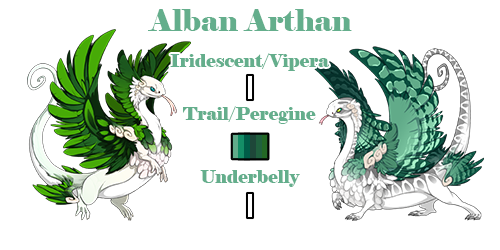
The Light of Arthur wrote:
Next in the cycle is the time of the Winter Solstice, called in the Druid Tradition Alban Arthan [the Light of Arthur]. This is the time of death and rebirth. The sun appears to be abandoning us completely as the longest night comes to us. Linking our own inner journey to the yearly cycle, the words of the Druid ceremony ask "Cast away, O wo/man whatever impedes the appearance of light." In darkness we throw on to the ground the scraps of material we have been carrying that signify those things which have been holding us back, and one lamp is lit from a flint and raised up on the Druid's crook in the East. The year is reborn and a new cycle begins, which will reach its peak at the time of the Midsummer Solstice, before returning again to the place of death-and-birth.
Although the Bible indicates that Jesus was born in the Spring, it is no accident that the early Church chose to move his official birthday to the time of the Midwinter Solstice - for it is indeed a time when the Light enters the darkness of the World, and we see again the building of Christianity on the foundations of earlier belief.
In a Christian culture we really only have one marker for the year, and that is Christmas. Easter and Harvest-time used to be significant, but can hardly be considered so now, when only a fraction of the British population attend Church regularly.
Druidry has eight markers, which means that every six weeks or so, we have the opportunity to step out of the humdrum of daily life, to honour the conjunction of Place and Time

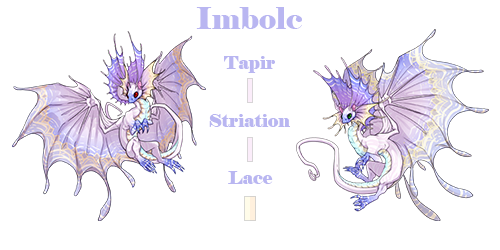
Oimelc, Ewes Milk wrote:
The next Festival occurs on February 2nd, or the eve of February 1st. It is called Imbolc in the Druid tradition, or sometimes Oimelc. Although we would think of Imbolc as being in the midst of Winter, it represents in fact the first of a trio of Spring celebrations, since it is the time of the first appearance of the snowdrop, and of the melting of the snows and the clearing of the debris of Winter. It is a time when we sense the first glimmer of Spring, and when the lambs are born. In the Druid tradition it is a gentle, beautiful festival in which the Mother Goddess is honoured with eight candles rising out of the water at the centre of the ceremonial circle.
The Goddess that ruled Samhuinn was the Cailleach, the Grey Hag, the Mountain Mother, the Dark Woman of Knowledge. But by Imbolc the Goddess has become Brighid, the Goddess of poets, healers and midwives.
And so we often use Imbolc as a time for an Eisteddfod dedicated to poetry and song praising the Goddess in her many forms. The Christian development of this festival is Candlemas - the time of the Presentation of Christ in the Temple. For years successive Popes had tried to stop parades of lit candles in the streets of Rome at this time, until seeing that it was impossible to put a stop to this pagan custom, they suggested that everyone enter the churches so that the priests could bless the candles.

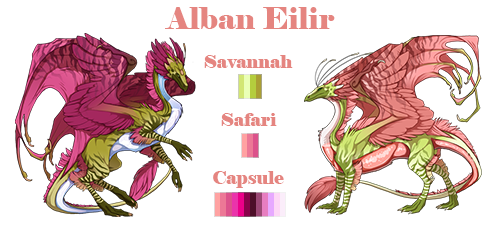
The Time of Light and Earth wrote:
Time moves on, and in a short while we come to the Spring Equinox - the time of equality of day and night, when the forces of the light are on the increase. At the centre of the trio of Spring Festas, Alban Eilir [the Light of the Earth] marks the more recognisable beginnings of Spring, when the flowers are beginning to appear and when the sowing begins in earnest.
As the point of psychological development in our lives it marks the time of late childhood to, say, 14 years - Imbolc marking the time of early childhood [say to 7yrs].
We are in the Spring of our lives - the seeds that are planted in our childhood time of Imbolc and Alban Eilir will flower from the Beltane time of adolescence onwards as capacities and powers that will help us to negotiate our lives with skill and accomplishment.

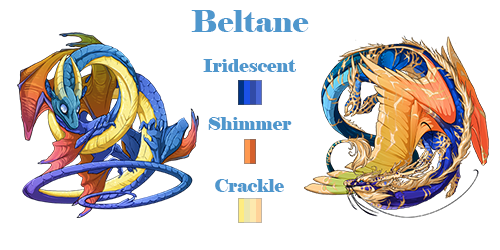
May Day wrote:
Beltane, on May 1st, marks the time of our adolescence and early wo/manhood. Spring is in full bloom, and twin fires would be lit at this time, through which would be passed the cattle after their long winter confinement, or over which those hoping for a child or good fortune would jump.
We see traces of the Beltane celebrations on May Day, when dancing round the maypole celebrates the fertility of the land and creates an echo of the ritual circle dances that must have been enacted in stone circles throughout the country

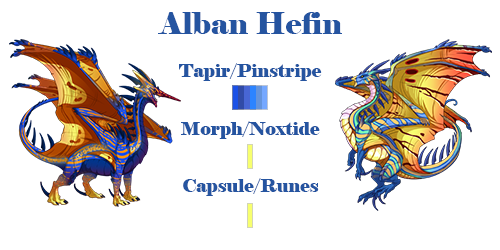
Light of The Shore wrote:
We have reached the time of the Summer Solstice, Alban Hefin, The Light of the Shore, by June 21st or 22nd [the dates for each of the solar festivals vary each year since the events are astronomical not man-made, like our calendar]. Light is at its maximum, and this is the time of the longest day. It is at this time that the Druids hold their most complex ceremony. Starting at midnight on the eve of the Solstice, a vigil is held through the night - seated around the Solstice fire. The night is over in a matter of hours, and as light breaks, the Dawn Ceremony marks the time of the sun's rising on this his most powerful day. At noon a further ceremony is held.

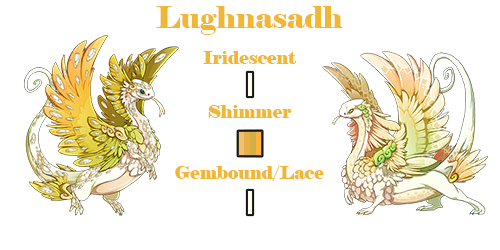
Lugh's Feast wrote:
Six weeks later we come to the time of Lughnasadh on August 1st, which marks the beginning of harvest time. The hay would have been gathered in, and the time for reaping the wheat and barley was due. It was a time of gathering together, of contests and games and of marriages. The marriages contracted at this time could be annulled at the same time the following year - offering the couple a sensible 'trial period'. In some areas a flaming wheel was sent rolling down the hillside at this time to symbolise the descent of the year towards Winter, and in the Druid ceremony a wheel is passed around the circle in symbol of the turning year. The Christian version of this festival is Lammas, which has recently been revived in some churches. The word Lammas comes from hlafmasse - 'loaf-mass' - since bread is offered from the newly harvested grain.

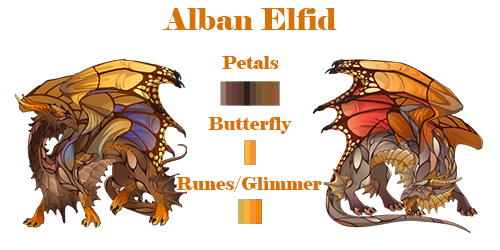
The Light of Water wrote:
The Autumnal Equinox, on September 21st or thereabouts, is called Alban Elfed or Light of the Water in the Druid tradition. It represents the second of the harvest festivals - this time marking the end of harvest-time, just as Lughnasadh marked its beginning. Again day and night are equally balanced as they were at the time of the Spring Equinox, but soon the nights will grow longer than the days and Winter will be with us. In the ceremony we give thanks for the fruits of the earth and for the goodness of the Mother Goddess.
And so the circle completes itself as we come again to the time of Samhuinn - the time of death and of rebirth.
All information Adapted from Druid Mysteries by Philip Carr-Gomm

[img]https://i.imgur.com/ceR8Bf4.png[/img]
Affiliates get 10% off
[center][url=https://www1.flightrising.com/forums/baz/2846780#post_2846780][img]https://i.imgur.com/sYYlMYp.png[/img][/url][/center]
[center][img]https://images2.imgbox.com/59/74/9jpruyGr_o.png[/img][/center]
[code][center][img]https://images2.imgbox.com/59/74/9jpruyGr_o.png[/img][/center][/code]

Affiliates get 10% off
Code:
[center][img]https://images2.imgbox.com/59/74/9jpruyGr_o.png[/img][/center]
Blessed Samhuinn all! I have 4 little babs born today looking for a good home!
[url=https://www1.flightrising.com/dragon/73394660][img]https://www1.flightrising.com/rendern/350/733947/73394660_350.png[/img][/url] "Aodh" 30kt
[url=https://www1.flightrising.com/dragon/73394661][img]https://www1.flightrising.com/rendern/350/733947/73394661_350.png[/img][/url] "Barabal" 30kt
[url=https://www1.flightrising.com/dragon/73394662][img]https://www1.flightrising.com/rendern/350/733947/73394662_350.png[/img][/url] "Ciarda" 30kt
[url=https://www1.flightrising.com/dragon/73394663][img]https://www1.flightrising.com/rendern/350/733947/73394663_350.png[/img][/url] "Bradach" 40kt
Blessed Samhuinn all! I have 4 little babs born today looking for a good home!

"Aodh" 30kt

"Barabal" 30kt

"Ciarda" 30kt

"Bradach" 40kt
